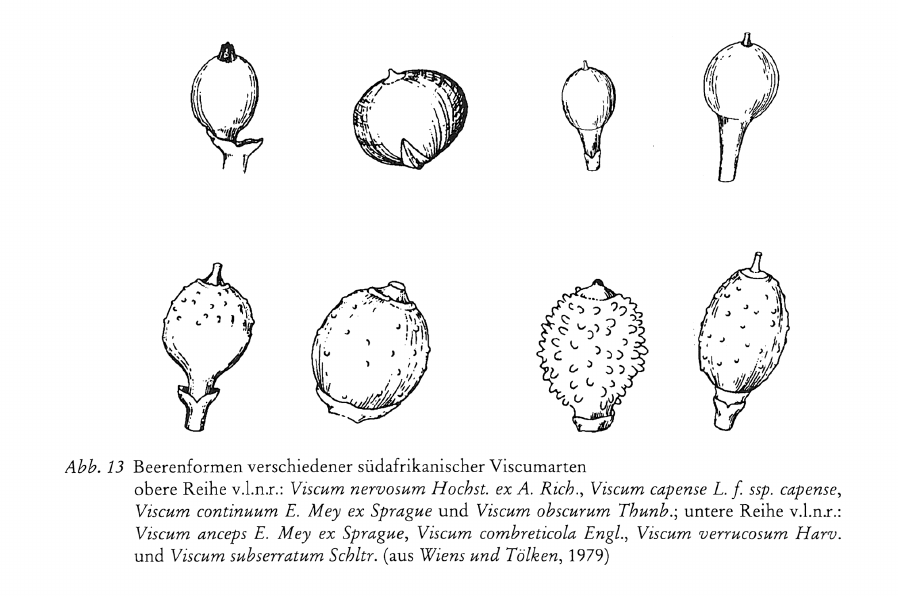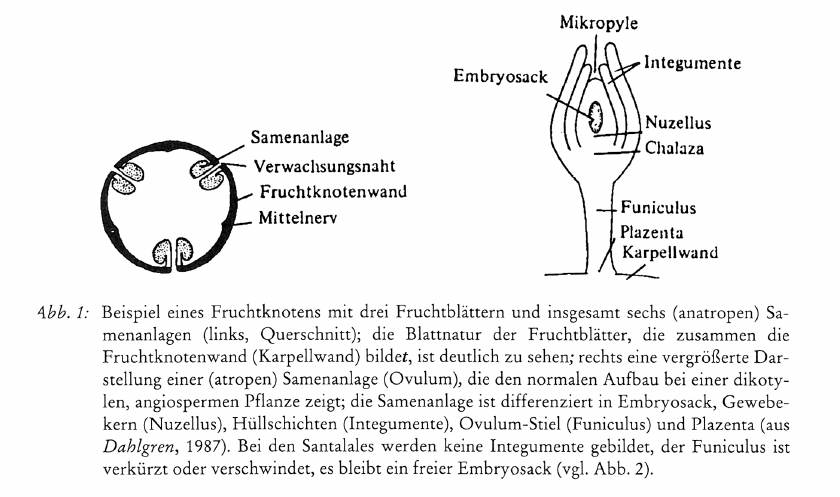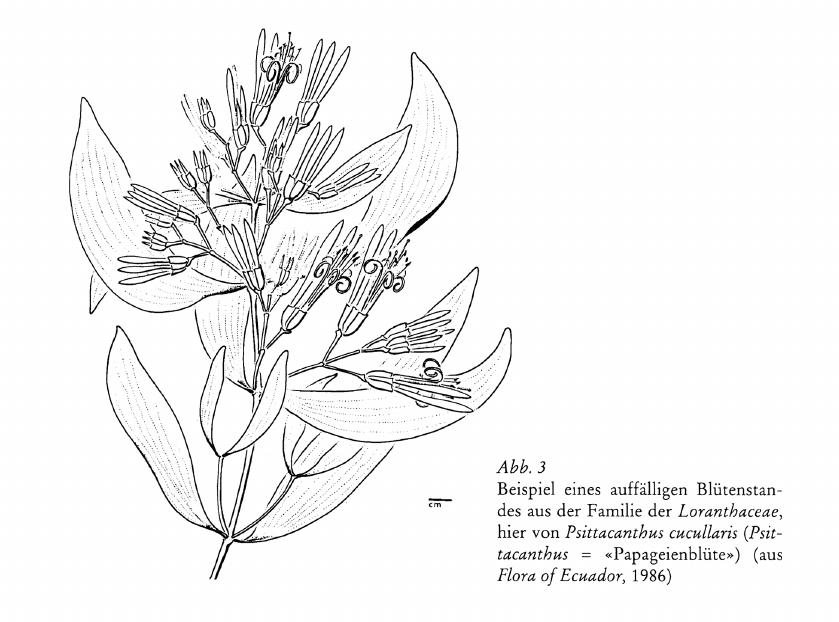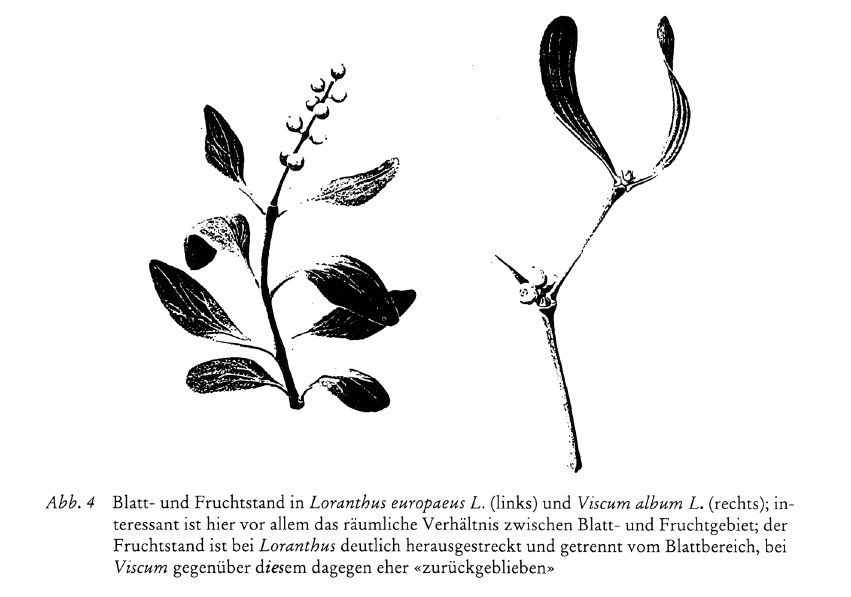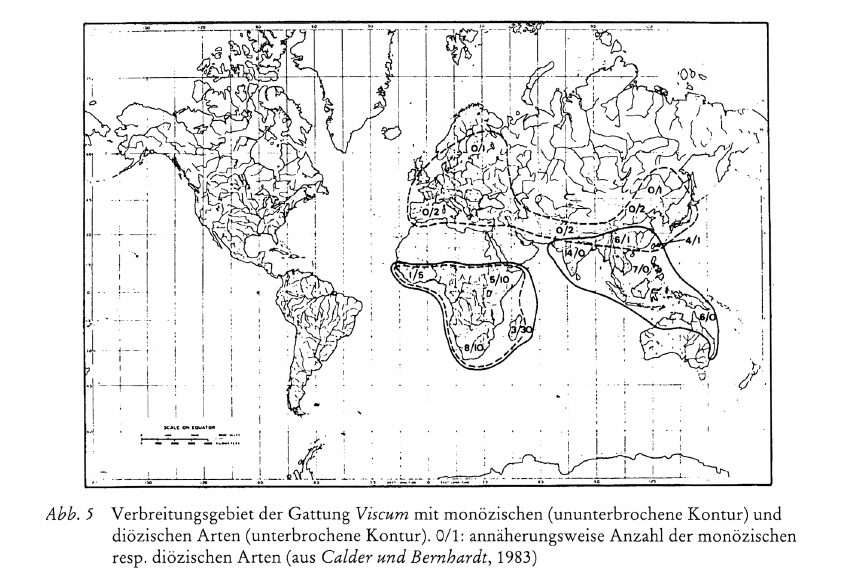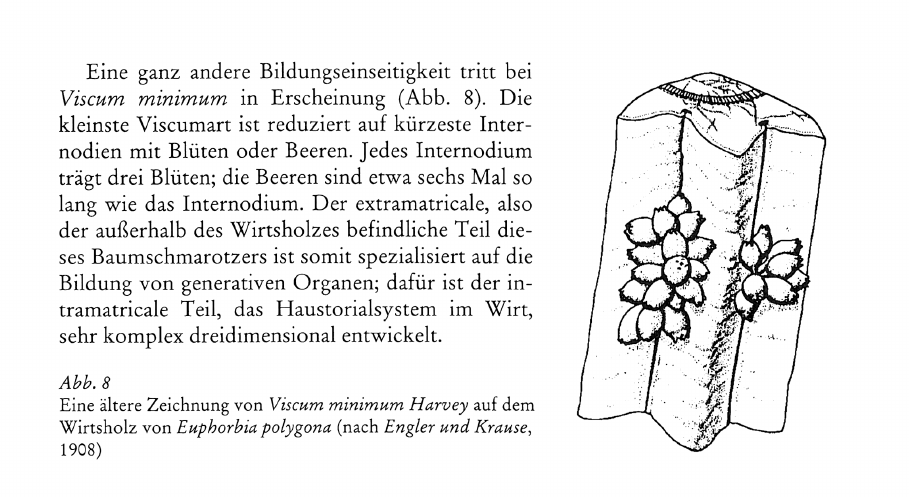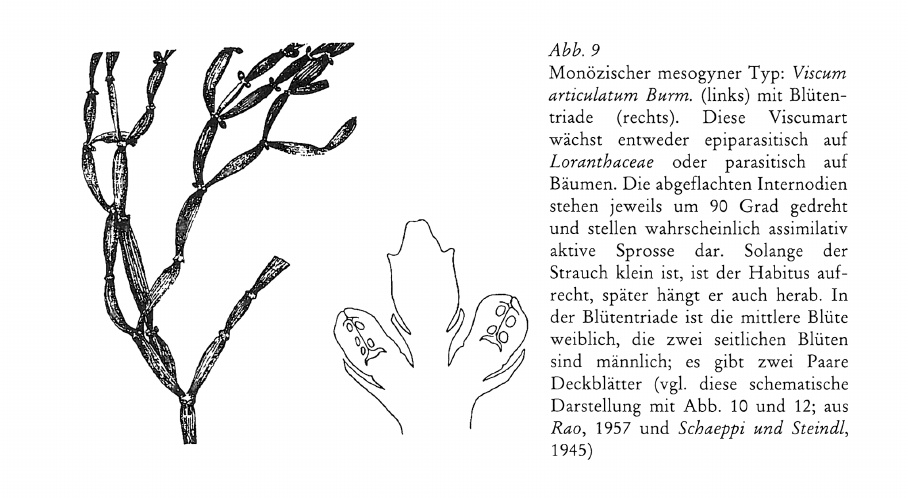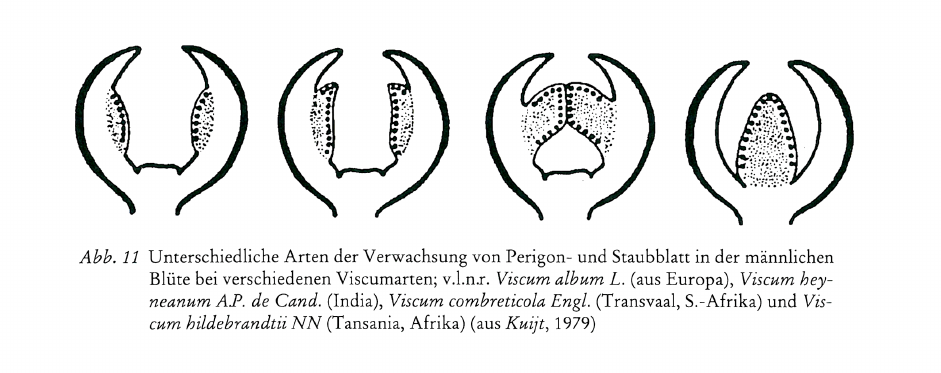Über die Bildung von Viscum album L.
Export Article Citation as
- Plain text
- BibTeX
- RIS format
- Download price : € 6.00
Abstract:
The comparison of Viscum album L. with other species of the genus and the family allows a characterization of its special way of growth and development. The order of Santalaceae and the family of Viscaceae show a remarkable tendency to reduction of leaf formation in generative organs. Also Viscum album has an extreme reduction of its female flower and gynoecium. In general, the stem of Viscum species has a dominant status: leaf and stem are morphologically and physiologically intermingled; the haustorial system is stemlike, too. The embryo of Viscum album grows immediately surrounded by stem tissue. The orientation of the developing processes in the white berry mistletoe to stem is culminated in the transformation of stem tissue in the berry during ripening. As a matter of fact, this transformation is necessary to keep the light dependent embryo alive and to facilitate the new beginning of a mistletoe plant on the host stem. Viscum album shows how tissue that actually is determined to lignification, hardening and darkening can be softened and be interspersed with light.
By imagining its development, one aspect of the therapeutical efficacy of this plant can be understood.

